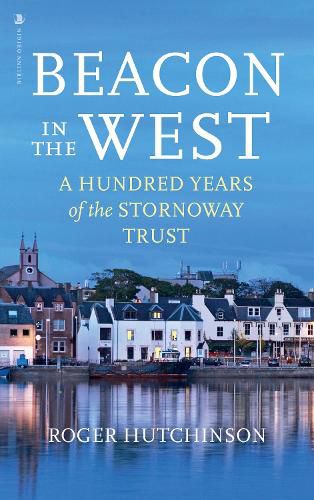Readings Newsletter
Become a Readings Member to make your shopping experience even easier.
Sign in or sign up for free!
You’re not far away from qualifying for FREE standard shipping within Australia
You’ve qualified for FREE standard shipping within Australia
The cart is loading…






In 1918 Lord Leverhulme bought the island of Lewis with ambitious plans to massively expand its fishing industry and increase its population.
In 1923, when his plans had failed, he offered it free of charge to the islanders in two parts. One part, which included impoverished rural areas, was economically unviable. But the other, based around the busy fishing port and administrative centre of Stornoway, was a different matter. In accepting Leverhulme's offer, the hardheaded, churchgoing business class of Stornoway took on the responsibility of making the radical slogan 'Land for the People' a reality. It was an unlikely coupling, but it worked to perfection.
The 20th century was a tumultuous time for Lewis. Migration and depopulation were exacerbated by two world wars. Such problems could not be addressed in the lottery of private landownership, but in the stable, democratic government of the Stornoway Trust, town and country alike would weather the storms.
Roger Hutchinson tells the story of those storms, and of the people who guided their pioneering estate into the relative security and prosperity of the 21st century. In doing so he paints a vivid portrait of a unique landholding experiment, of Highland land struggle and of the island of Lewis itself.
$9.00 standard shipping within Australia
FREE standard shipping within Australia for orders over $100.00
Express & International shipping calculated at checkout
In 1918 Lord Leverhulme bought the island of Lewis with ambitious plans to massively expand its fishing industry and increase its population.
In 1923, when his plans had failed, he offered it free of charge to the islanders in two parts. One part, which included impoverished rural areas, was economically unviable. But the other, based around the busy fishing port and administrative centre of Stornoway, was a different matter. In accepting Leverhulme's offer, the hardheaded, churchgoing business class of Stornoway took on the responsibility of making the radical slogan 'Land for the People' a reality. It was an unlikely coupling, but it worked to perfection.
The 20th century was a tumultuous time for Lewis. Migration and depopulation were exacerbated by two world wars. Such problems could not be addressed in the lottery of private landownership, but in the stable, democratic government of the Stornoway Trust, town and country alike would weather the storms.
Roger Hutchinson tells the story of those storms, and of the people who guided their pioneering estate into the relative security and prosperity of the 21st century. In doing so he paints a vivid portrait of a unique landholding experiment, of Highland land struggle and of the island of Lewis itself.